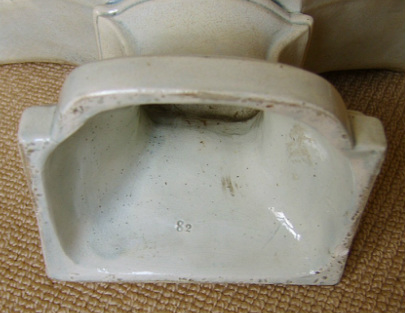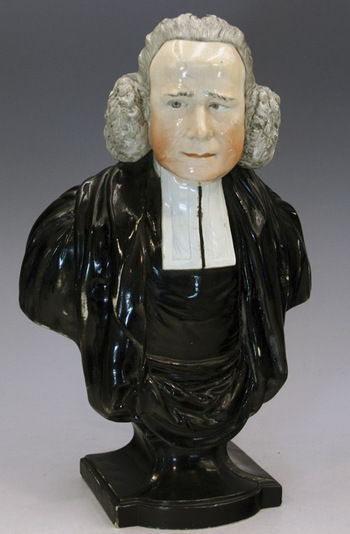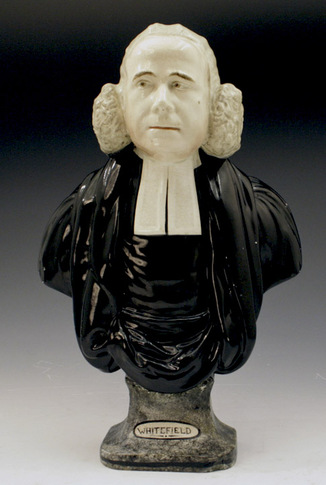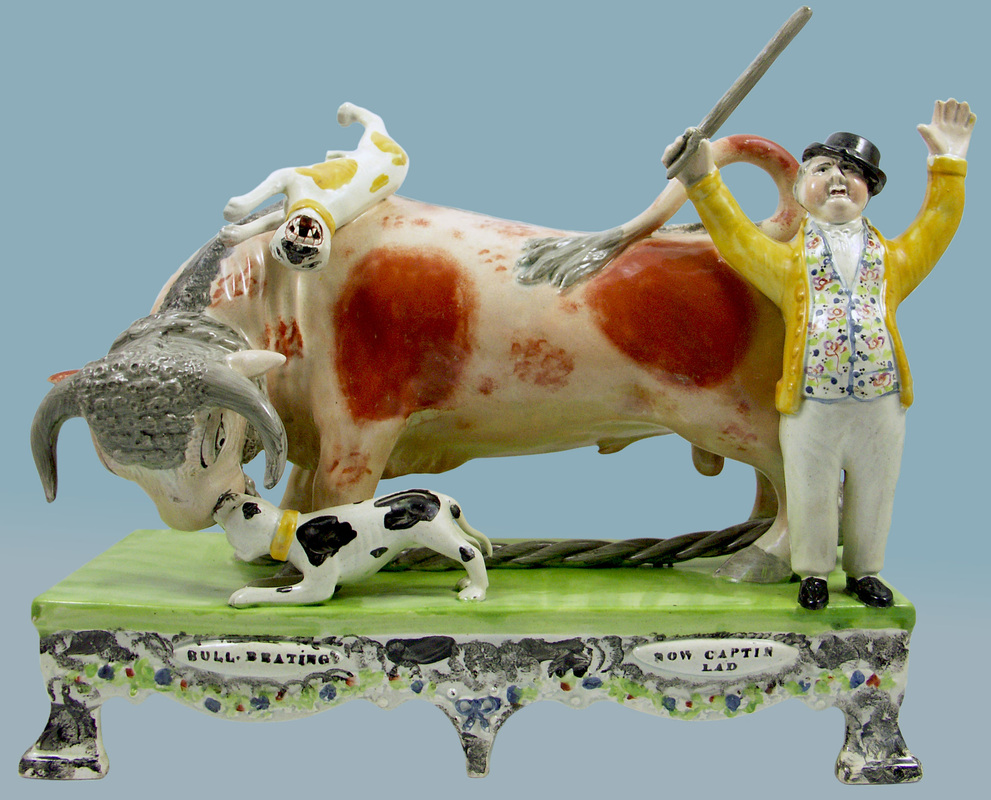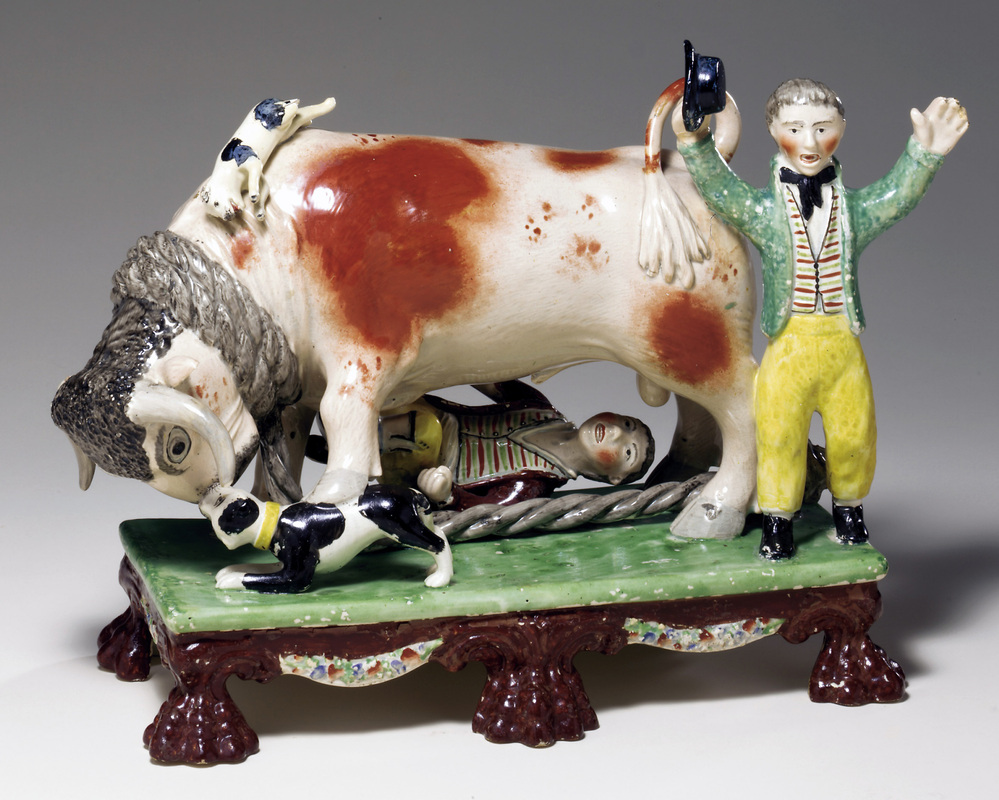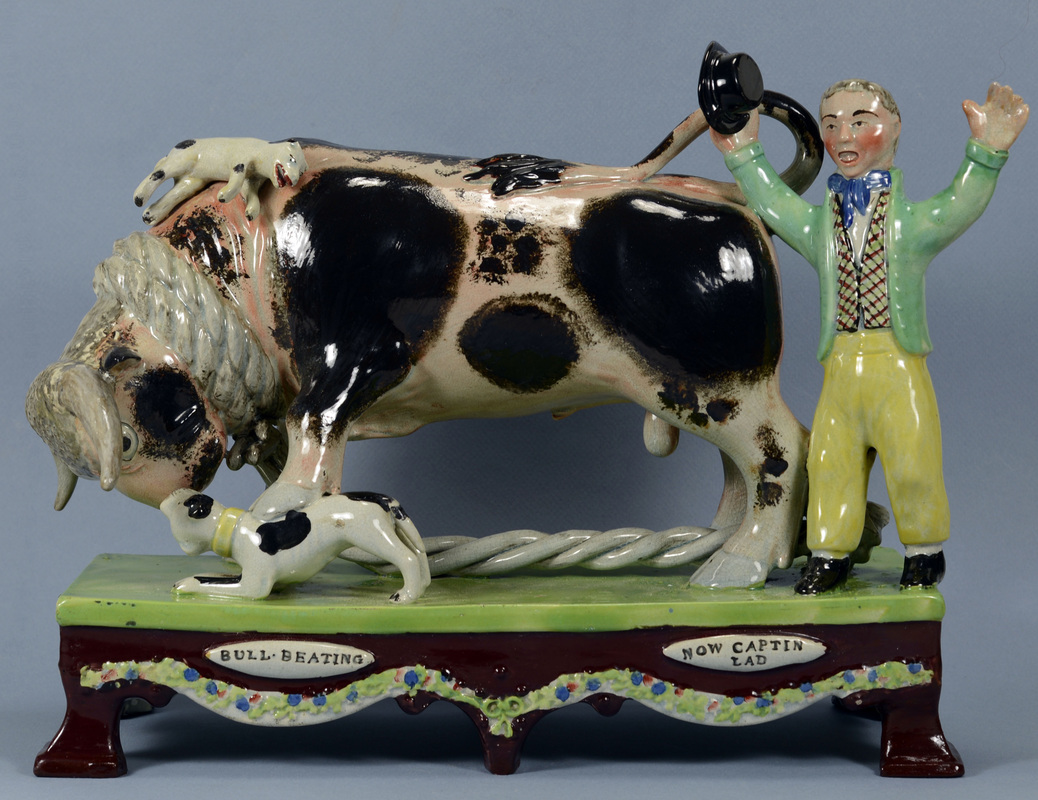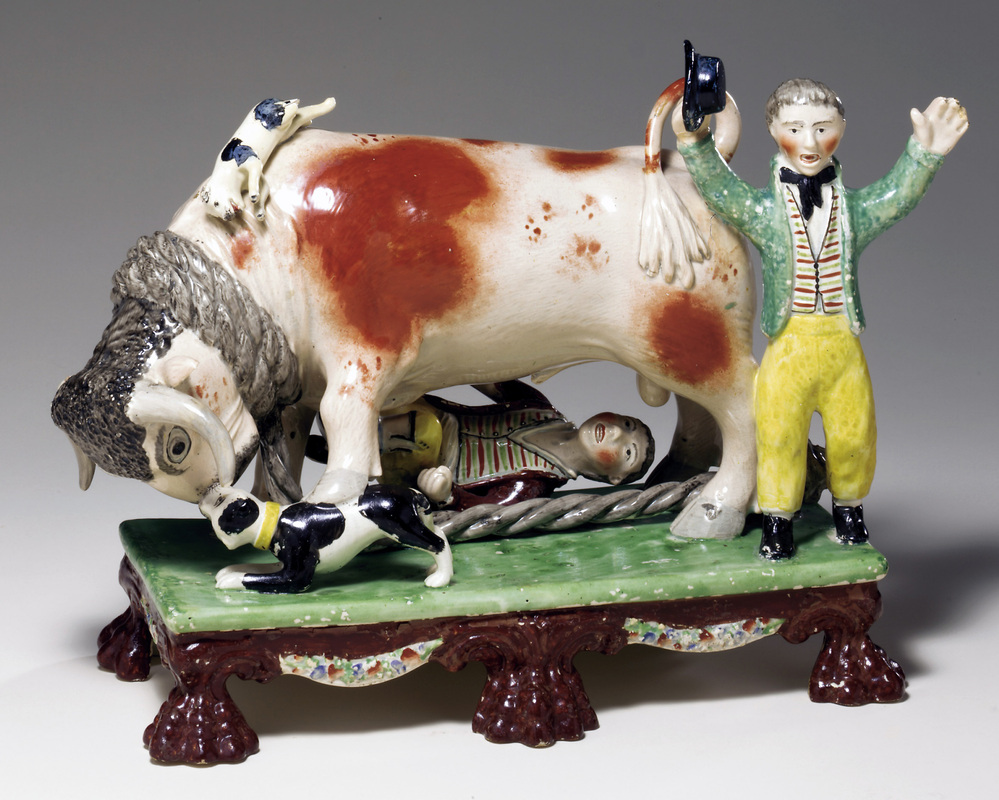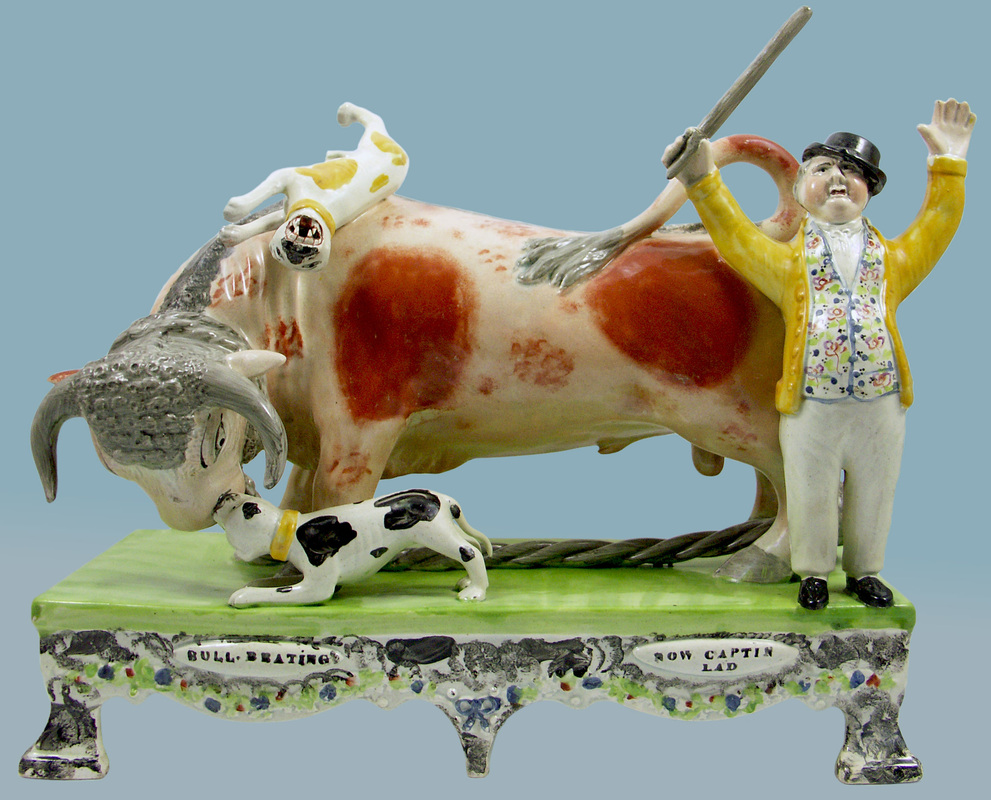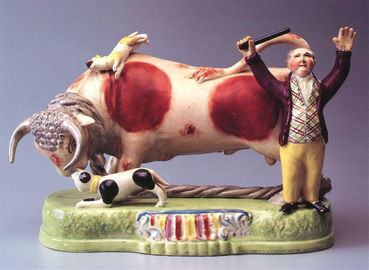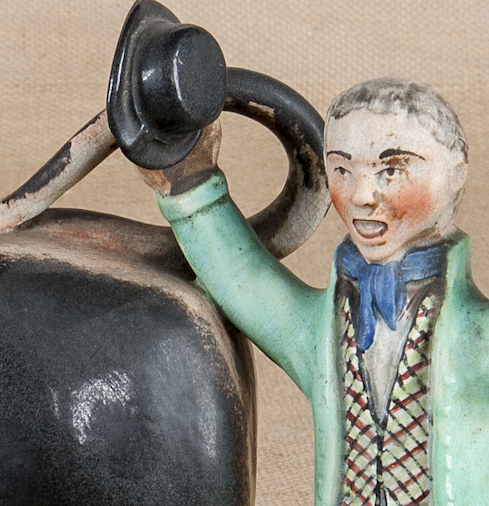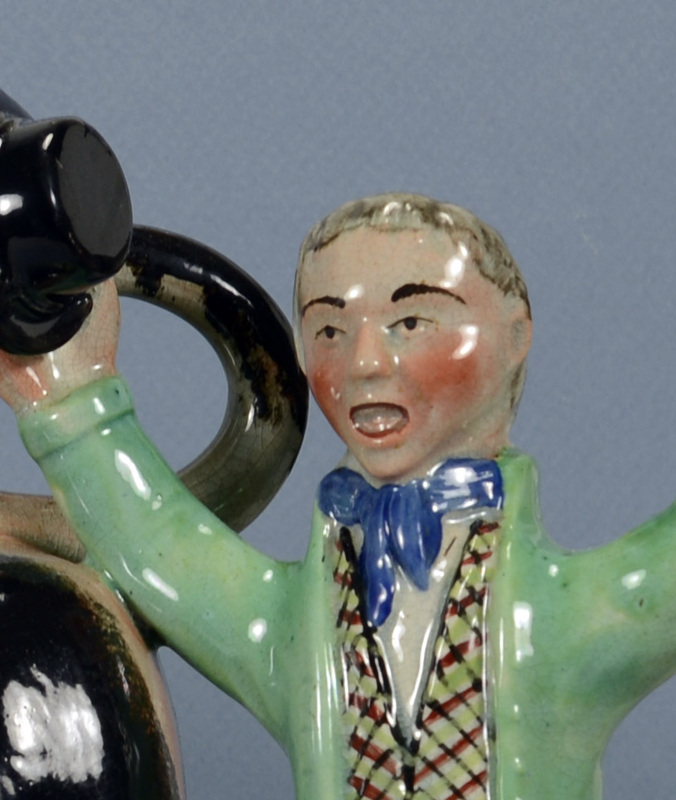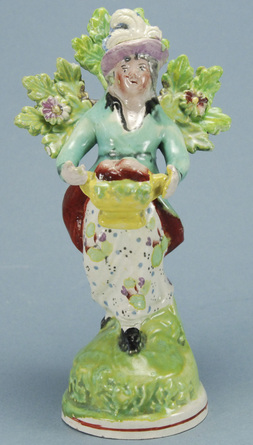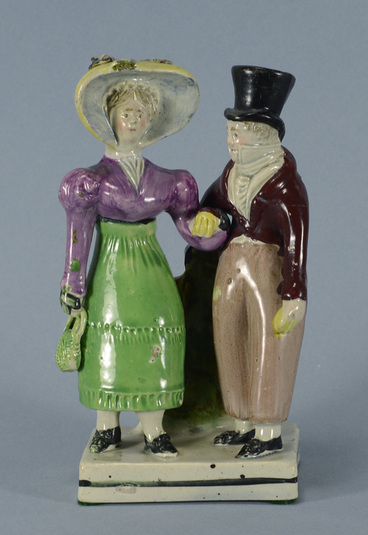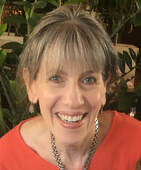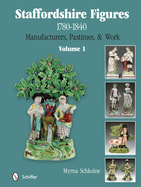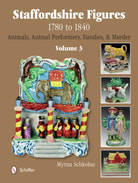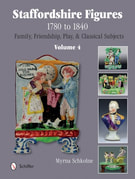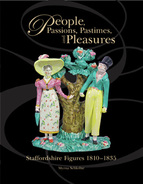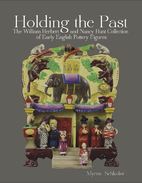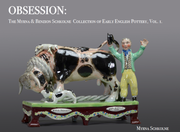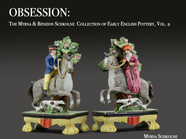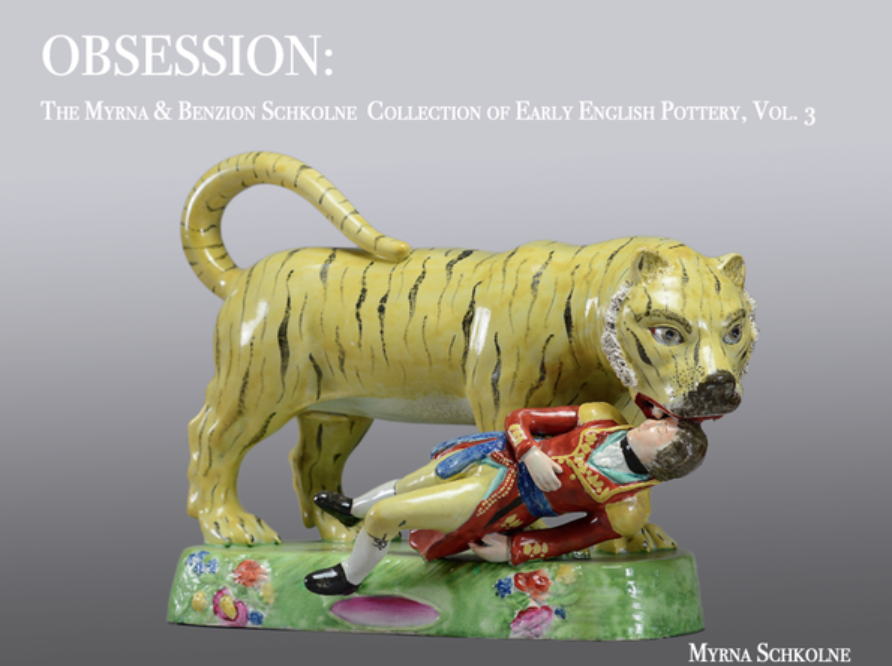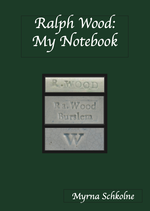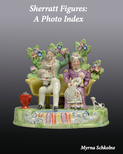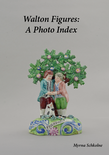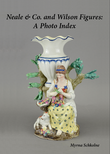Whitefield was a dramatic emotional speaker, cross-eyed and of small stature, with a booming voice that reached huge crowds. He popularized preaching in the open, a practice that enabled him to reach people who would not have entered a church. He preached in Scotland, Ireland, and Europe, but his impact was most profound in America, which he visited seven times and where his name became a household word. He died in Newburyport, Massachusetts, on September 30, 1770, and he was buried beneath the pulpit of Newburyport’s First Presbyterian Church.
Given the importance of Whitefield in his time, it is not surprising to discover that others too made his bust. Enoch Wood/Wood & Caldwell made the bust below. It is impressed on a medallion on the back “THE REVD. GEORGE WHITFIELD, DIED SEPT. 30, 1770. AGED 56. ENOCH WOOD SCULP. BURSLEM”. An identical bust in the Victoria and Albert Museum (83-1874) is impressed “Neale & Co”, suggesting that Enoch Wood may have modeled this bust while in Neale’s employ and before he became an independent potter in 1783.
I don't know who made the bust below, but isn't it nice to see a titled example?
With apologies for the varying fonts in this posting. I just can't fix it!

